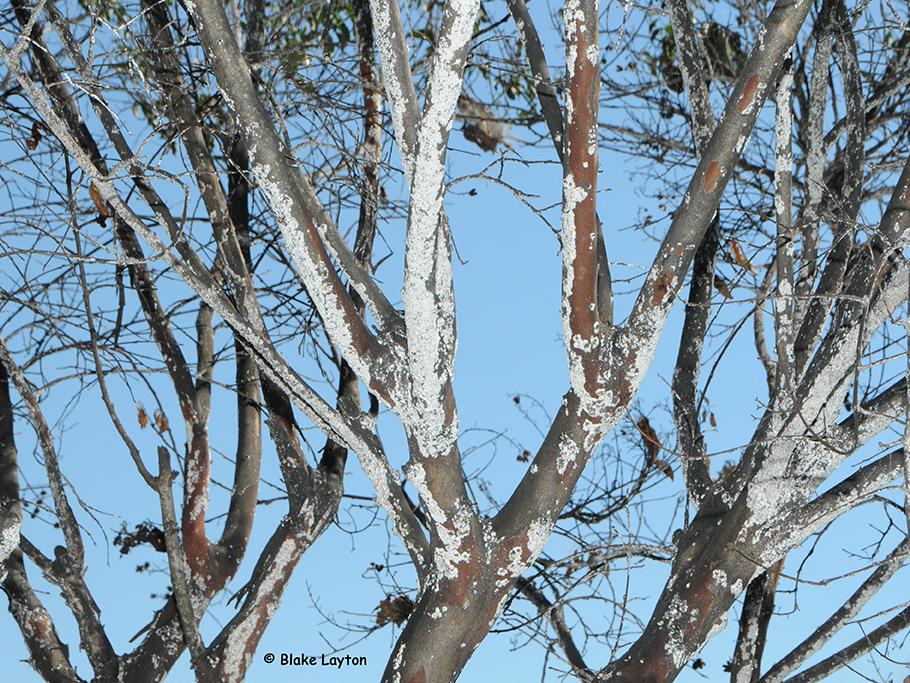Crape Myrtle Bark Scale, Vol. 4, No. 14

Acanthococcus lagerstroemiae
Order: Hemiptera
Family: Eriococcidae
Before buying and planting crape myrtle trees it is important to be sure they are not infested with crape myrtle bark scale (CMBS). CMBS is a new, non-native pest of crape myrtle that was first detected in Mississippi in 2015. So far it is known to occur in and around the areas of Ocean Springs, Southaven/Olive Branch, Oxford, Madison, Natchez, and Senatobia. But it can quickly and easily spread to other areas of the state. Initial infestations are usually brought into an area on newly planted trees, trees that were either infested when they were purchased at the retail nursery or when they were installed by a commercial landscape contractor. Once established in an area, CMBS can readily spread to other nearby trees. The females can’t fly, but newly hatched crawlers can move to trees that are up to several hundred feet away by hitching rides on the feet of birds and other animals, or by being transported on limbs trimmed from infested trees.
This is a serious pest that can turn what has traditionally been a beautiful, low-maintenance landscape tree into an ugly, high-maintenance tree. CMBS causes crape myrtles to become black and ugly with accumulations of sooty mold and results in poor growth and poor bloom production. Heavy, uncontrolled infestations can even kill trees or cause the trees and the area underneath them to be so unsightly that the homeowner opts to have them removed. Fortunately, there are effective treatments.
What to Look For: Heavy infestations of CMBS are easy to identify. 1} Watch for crape myrtles with heavy accumulations of black sooty mold, but keep in mind that heavy aphid infestations also cause this symptom. 2} Look more closely for patches of white felt-like material on the trunk, limbs or twigs. 3} Individual adult female scales are oval-shaped and about 1/10 inch long, but heavily infested limbs may be totally encrusted with scale. 4} CMBS bleed pink if the felt cover is broken with a knife point or tooth pick.
Control: The best offence is a good defense. Avoid buying and planting infested crape myrtles. Work closely with your nursery or landscape contractor to be sure any crape myrtles you purchase are CMBS free. Systemic insecticides such as imidacloprid, dinotefuran, or thiamethoxam applied as soil injections or soil drenches in May to June are the best treatments available for crape myrtle bark scale. Because these treatments do not give 100% control, plan on treating trees again the following year—even if you don’t see any scale on them. See extension publication 2938, Crape Myrtle Bark Scale Identification and Control, for more information. This publication contains tables with recommended insecticides for both home and commercial application, including brand names, treatment rates and tips on how to use these soil-applied products.
Blake Layton, Extension Entomology Specialist, Mississippi State University Extension Service.
The information given here is for educational purposes only. Always read and follow current label directions. Specific commercial products are mentioned as examples only and reference to specific products or trade names is made with the understanding that no discrimination is intended to other products that may also be suitable and appropriately labeled.

